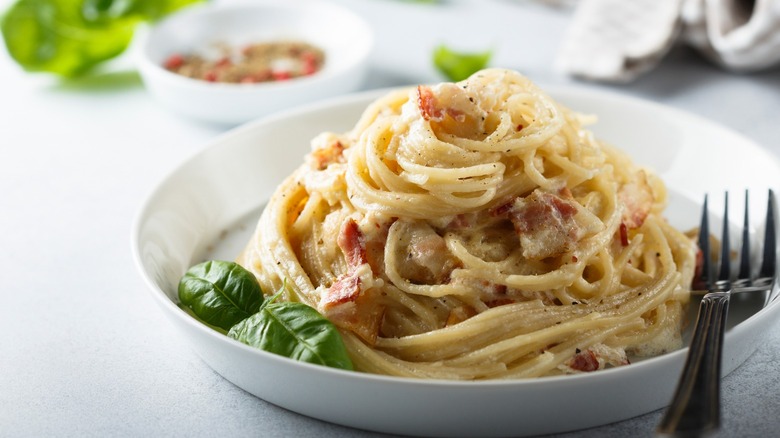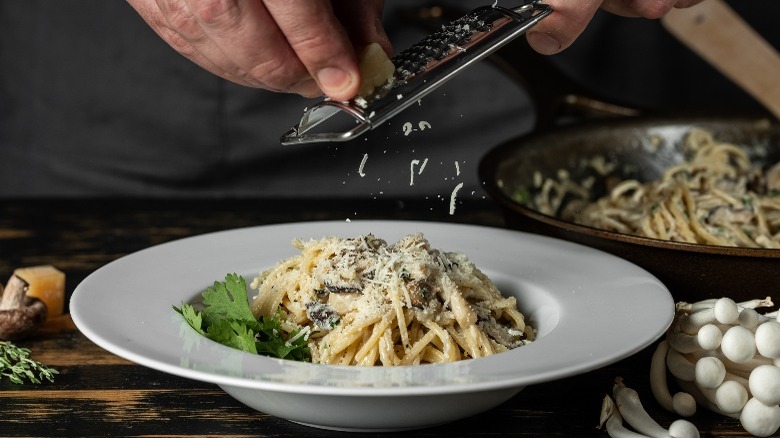The Mantecare Technique For Creamy Pasta Dishes
Do you dream of creamy pasta so velvety and luxurious that it covers each noodle perfectly? Then look no further than mantecare, an invaluable Italian cooking technique that separates the mediocre from the sublime by ensuring an even and smooth creaminess in dishes such as fettuccine Alfredo, spaghetti carbonara, and anchovy pasta.
Used for risotto, dry pasta, and even gnocchi, mantecare essentially means to mix until creamy. This is primarily achieved via mantecatura, a process applied to the final stages of cooking by adding pasta water and fat (usually butter, oil, and/or cheese) to the pasta and blending all the ingredients into a seamless, swoon-worthy union.
Though simple and quick, the technique does require careful attention to timing. However, once it's been mastered you'll never settle for a plate of dry, gummy noodles topped with a mound of plopped-on sauce again. Understanding the underlying science behind mantecatura can help expedite the learning process.
How to cook pasta using the Italian mantecare technique
To mantecare properly, begin by boiling your pasta as usual. Depending on the type of sauce you're making you can assemble your ingredients for use during the mantecatura process or cook your sauce ahead in a separate pan. To ensure the pasta remains al dente and doesn't overcook, you'll want to drain it early, as it will continue to cook during the mantecatura. But don't pour out all that lovely pasta water, rather save one to two cups aside for the big finish — it's integral to the technique.
After draining your pasta, put the noodles back into the pot and return it to the stove, adjusting the heat to low, or turning it off to avoid overcooking, then add your sauce elements. Now, it's time for the mantecatura process. The key to achieving the creamiest pasta is in harnessing the binding power of the pasta's own starch so that the sauce clings beautifully to the noodles. This is accomplished, at the end of the cooking process, by adding the pasta water back into the dish, a little at a time, along with fat (oil, butter, cheese) while slowly stirring the pasta and sauce together. As the starchy water evaporates the sauce binds to the noodles, forming a lush emulsification that results in that close-your-eyes-for-the-first-bite of blissful creaminess.

